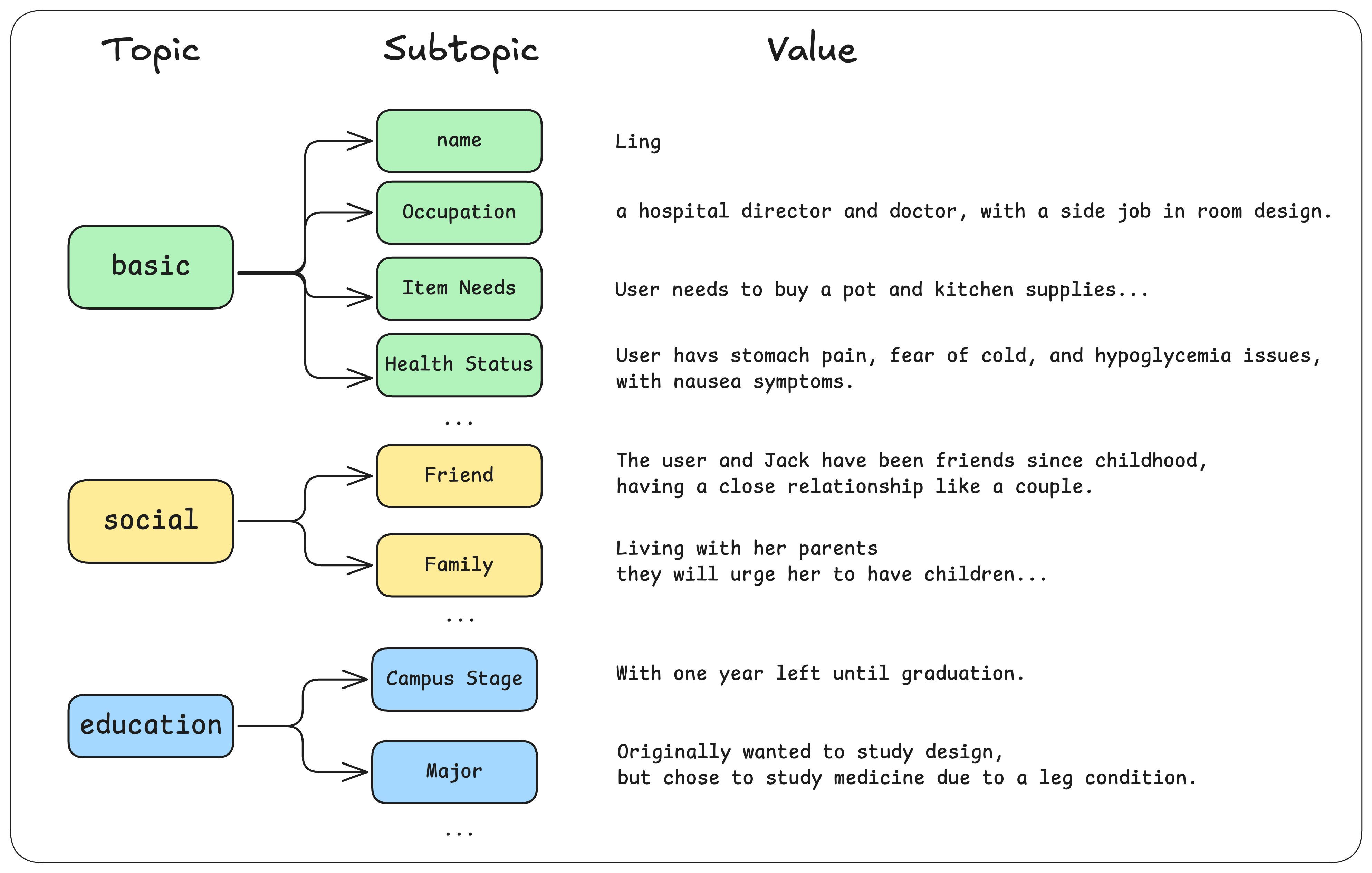
A sample user profile in Memobase, showing structured data slots.
Locating the config.yaml File
Memobase uses a config.yaml file for backend configuration. You can find this file at src/server/api/config.yaml in your self-hosted instance. A typical configuration looks like this:
Understanding Profile Slots
Memobase comes with a default schema of profile slots, such as:additional_user_profiles field in config.yaml:
overwrite_user_profiles field instead.
For detailed instructions on formatting profile slots, see Profile Slot Configuration.